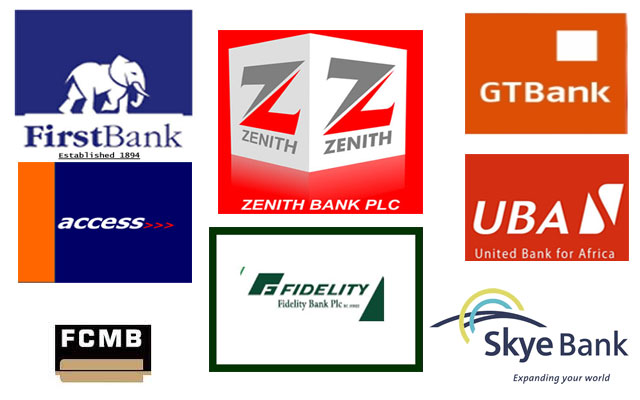- Nigerian commercial banks have incurred an estimated $1 billion in loan losses during the first half of 2023, a significant increase compared to the same period last year, largely attributed to rising inflation and interest rate hikes by the Central Bank of Nigeria.
- Amidst these macroeconomic challenges, banks like UBA and GTCO have seen over 1,000% year-on-year growths in impairment charges, affecting their core business of lending and reducing their net interest income.
- Despite the adverse conditions, banks have managed to maintain non-performing loan ratios within regulatory limits, partly due to a substantial increase in non-interest income generated from forex revaluations.
Nigeria’s leading commercial banks suffered loan losses estimated at a combined $1 billion in the first half of 2023.
This is according to data collated from the 2023 half-year financial statements released by the banks in the last few weeks.
In terms of local currency, the losses amount to over N730 billion for the first two quarters of the year, dwarfing the N163 billion incurred over the same period last year.
It’s worth noting that Access Bank, Nigeria’s most substantial financial institution by total assets, has not yet released its audited accounts for the first half of the year.
Rising Inflation and Interest Rates fuel losses
The surge in impairments comes against a backdrop of growing inflationary pressures and subsequent hikes in interest rates.
To curb spiralling inflation, the Central Bank of Nigeria (CBN) has significantly raised its key interest rates, going from 11.5% in December 2021 to a 15-year peak of 18.75%.
Market experts widely anticipate another interest rate hike at the upcoming Monetary Policy Committee (MPC) meeting, which has been rescheduled from its original dates of September 25 and 26, 2023.
As the CBN continues its aggressive policy measures to combat inflation, the cost of borrowing has also risen. This inflationary environment makes loans more expensive to service, thereby increasing the likelihood of borrower default.
The Domino Effect on Impairment Charges
Faced with the growing risk of customer default, banks have had to escalate their impairment charges to buffer against potential future losses.
In the first half of 2023, impairment charges on loans and advances across banks witnessed a significant year-on-year surge, with banks like UBA and GTCO recording over 1,000% year-on-year growth in impairment charges during the same period. Both banks recorded loan impairments of N164.2 billion and N153.9 billion respectively.
GTB attributed these ballooning losses to “weakening macroeconomic conditions” and losses incurred from investments in Ghana’s Eurobonds.
“The Group booked loan impairment charges of ₦82.96bn in H1-2023 from ₦3.51bn in H1-2022 due to weakening macroeconomic variables.
“The Group also recognised ₦81.3bn in H1-2023 as an impairment charge on other Financial Assets (FA) also by way of management overlay as loss rate heightened on its investment in Ghanaian sovereign securities and other foreign currency financial instruments whose underlying values are sensitive to adverse exchange rate movement.”
The substantial surge in impairment charges on loans and advances underscores a significant concern; banks are bracing themselves for more substantial losses from their core revenue stream, which is lending to customers.
These provisions have cast a shadow over the banks’ income generated from their core business line, which is lending to customers, consequently reducing their net interest income after impairment charges.
Zenith Bank specifically outlined this dilemma, indicating that high impairment levels, coupled with elevated interest expenses due to inflation, have impacted its net interest margin (NIM), which fell from 7.1% to 5.9% year-on-year.
Impairment levels increased significantly in recognition of the heightened risk environment resulting in the cost of risk growing from 1.4% to 8.8%. Cost of funding also grew YoY from 1.4% in H1 2022 to 2.6% in H1 2023 due to the spike in interest rates, with interest expense growing from NGN57 billion in H1 2022 to NGN153.6 billion in H1 2023. This affected our net interest margin (NIM) which reduced from 7.1% to 5.9% over the same period.
Silver Linings and Analyst Perspectives
Despite these grim figures, commercial banks have maintained non-performing loan ratios that are within regulatory limits. GTB, Zenith Bank, UBA, and FBN Holding reported NPL ratios of 4.6%, 3.9%, 3.3%, and 4.3%, respectively.
These more favourable ratios have been bolstered by a considerable increase in non-interest income, particularly from forex positions.
For example, four banks within the FUGAZ group (excluding Access Bank) reported a combined N1.3 trillion from forex revaluation gains, primarily from swaps and non-deliverable forwards.
This is a significant leap from just N16 billion over the same period in 2022.
Some financial analysts who spoke with Nairametrics suggested that the escalation in loan impairments might be a strategic move by banks.
This increase could be a way to fast-track loan provisioning, which can now be offset by the gains from forex revaluations.
Nairametrics


